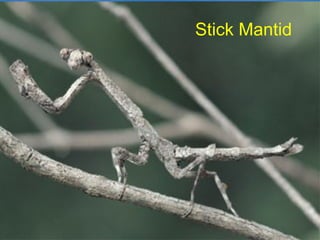Darwin natural selectionnotes
- 1. Darwin & NaturalDarwin & Natural SelectionSelection
- 2. Learning Goals 1. Define "Evolution" & "Natural Selection". 2. Describe the 4 steps of Natural Selection, giving an example of each. 3. Explain the importance of "Variation". 4. Does Natural Selection act on an organism phenotype or genotoype? Explain! 5. List the 5 evidences that support the Theory of Evolution.
- 3. Theory of EvolutionTheory of Evolution Evolution: The process of change over time Specifically, a change in the frequency of a gene or allele in a population over time
- 4. Charles DarwinCharles Darwin Father of Evolution Proposed a mechanism for evolution, natural selectionnatural selection Darwin went on a 5-year trip around the world on the ship, the HMS Beagle As the ship’s naturalist, he made observations of organisms in South America and the Galapagos Islands •Wrote a book, “Wrote a book, “Origin of the SpeciesOrigin of the Species””
- 7. Natural SelectionNatural Selection Natural Selection: Organisms that are best adapted to an environment survive and reproduce more than others
- 8. Darwin’s Theory of Natural Selection occurs in four parts: Overproduction Variation Selection Adaptation
- 9. 1. Overproduction1. Overproduction Each species produces more offspring than can survive
- 10. 2. Variation2. Variation Each individual has a unique combination of inherited traits. These natural differences are called variations
- 12. Why is Variation Important? Because the environment changes. The more variationvariation withinwithin aa speciesspecies, the more likely it will survivesurvive EX: If everyone is the same, they are all vulnerable to the same environmental changes or diseases The more variation ofvariation of types oftypes of speciesspecies in an habitat, the more
- 13. Which community has a betterWhich community has a better chance of surviving a naturalchance of surviving a natural disaster?disaster? Community ACommunity A Community BCommunity B
- 14. 3. Selection3. Selection Individuals COMPETE for limited resources: Food, water, space, mates Natural selection occurs through “Survival of the fittestSurvival of the fittest” FitnessFitness: the ability to survive and reproduce-the advantageous trait will be passed to the next generations Not all individuals survive to
- 15. 4. Adaptation4. Adaptation The individuals with the bestbest traits / adaptations will survivetraits / adaptations will survive and have the opportunity to passand have the opportunity to pass on it’s traitson it’s traits to offspring. Adaptation:Adaptation: an inherited trait that increases an organism’s chances of survival
- 16. Individuals with traits that are not well suited to their environment either die or leave few offspring. Evolution occurs when good traitsgood traits build up in a populationbuild up in a population over many generations and bad traitsbad traits are eliminated by the death of theare eliminated by the death of the individualsindividuals.
- 17. What adaptations do you see?
- 18. What adaptations do you see?
- 23. Peppered Moth Which moth will the bird catch? A B
- 24. Evidence for Evolution: Fossil Record Homologous Body Structures Vestigial Organs Embryology Biochemical Evidence
- 25. The Fossil RecordThe Fossil Record FossilsFossils: a record of the history of life on Earth
- 26. Archaeopteryx Missing link between reptiles and birds
- 28. HomologousHomologous (Common)(Common) Body StructuresBody Structures HomologousHomologous Body StructuresBody Structures: similar anatomy in different types of animals because of common ancestor
- 30. Vestigial OrgansVestigial Organs Vestigial Organs: “leftover” traces of evolution that serve no purpose
- 32. EmbryologyEmbryology EmbryologyEmbryology: embryos of all vertebrates are very similar early on
- 34. Biochemical EvidenceBiochemical Evidence BiochemistryBiochemistry: DNA with more similar sequences suggest species are more closely related EX: Humans and chimpanzees share more than 98% of identical DNA sequences
- 35. Learning Goals 1. Define "Evolution" & "Natural Selection". 2. Describe the 4 steps of Natural Selection, giving an example of each. 3. Explain the importance of "Variation". 4. Does Natural Selection act on an organism phenotype or genotoype? Explain! 5. List the 5 evidences that support the Theory of Evolution.
- 44. Stick Mantid
- 45. Flower Mantid












































